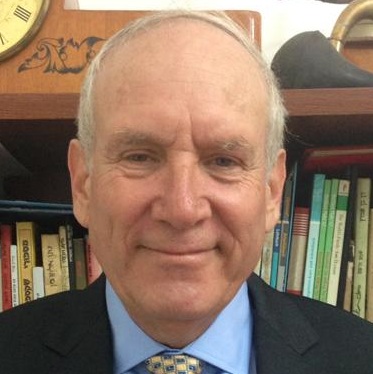Yosef Gruenbaum

Yosef Gruenbaum is an Israeli researcher, academic, biochemist and professor in medicine based in Jerusalem, Israel. He is known for his research on nuclear lamins and their associated proteins in health and disease. He has been the Chairman of the Silberman Institute of Life Sciences at the Hebrew University of Jerusalem and an adjunct professor at the Northwestern University, Chicago.
Gruenbaum received a number of honors. He was honored with The Gruss Lipper Fellowship in 2004 and William T. Golden scholar in residence in 2005 by Marine Biological Laboratory, Woods Hole, Massachusetts. In 2005, Yosef Gruenbaum received his honorary degree from Charles University in Prague, Czech Republic.
Prof. Gruenbaum’s research focuses on Lamins, the major constituent of the nuclear lamina, a proteinaceous layer underlying the inner nuclear membrane. Lamins are required to maintain nuclear structure, and play a major role in the mechano-elastic properties of cells and tissues. Mutations in lamins cause >14 distinct diseases, called laminopathies, including the accelerated aging diseases Hutchison Gilford progeria syndrome and Atypical Werner Syndrome, which are probably the best models for studying normal aging. However, it is not clear how lamins are organized in vivo and how aging affects the nuclear lamina and vice versa. Prof. Gruenbaum’s lab investigates the role of aging in the mechanical properties of lamins, using C. elegans as a model organism for both normal and accelerated aging states.
Gruenbaum received a number of honors. He was honored with The Gruss Lipper Fellowship in 2004 and William T. Golden scholar in residence in 2005 by Marine Biological Laboratory, Woods Hole, Massachusetts. In 2005, Yosef Gruenbaum received his honorary degree from Charles University in Prague, Czech Republic.
Prof. Gruenbaum’s research focuses on Lamins, the major constituent of the nuclear lamina, a proteinaceous layer underlying the inner nuclear membrane. Lamins are required to maintain nuclear structure, and play a major role in the mechano-elastic properties of cells and tissues. Mutations in lamins cause >14 distinct diseases, called laminopathies, including the accelerated aging diseases Hutchison Gilford progeria syndrome and Atypical Werner Syndrome, which are probably the best models for studying normal aging. However, it is not clear how lamins are organized in vivo and how aging affects the nuclear lamina and vice versa. Prof. Gruenbaum’s lab investigates the role of aging in the mechanical properties of lamins, using C. elegans as a model organism for both normal and accelerated aging states.